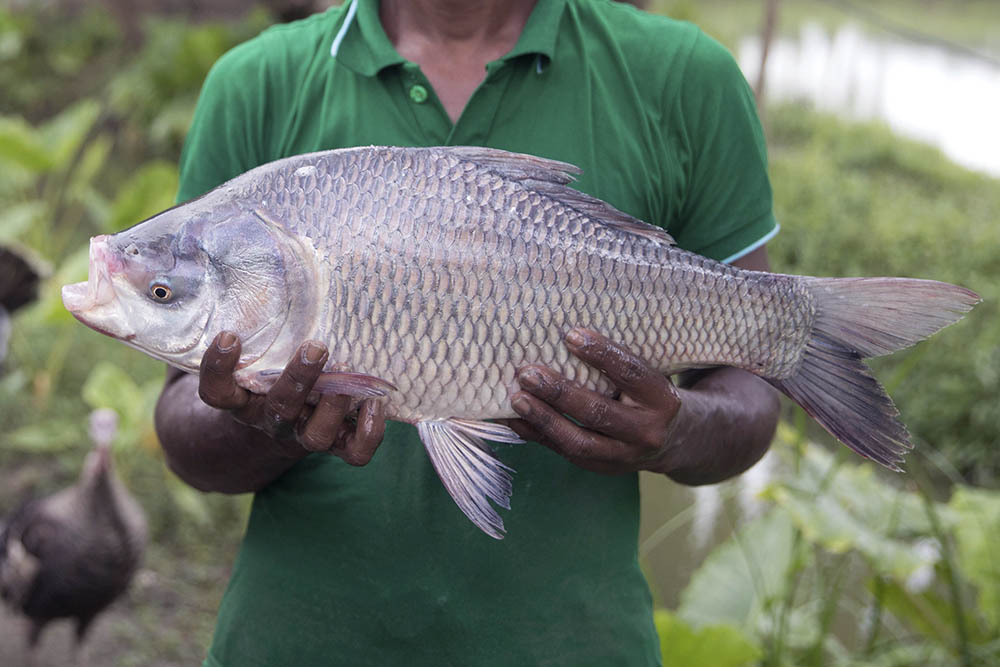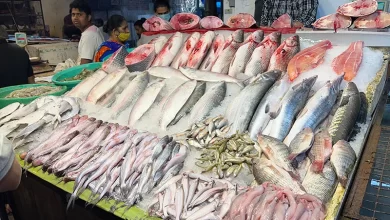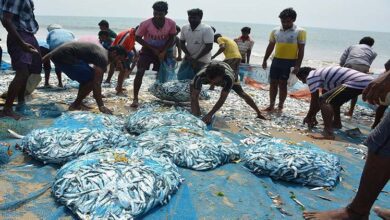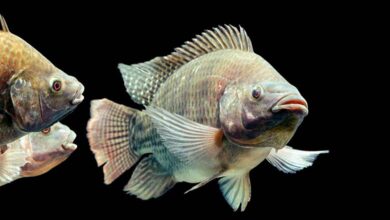
Fish farming has undergone a remarkable transformation in the Rajshahi region, particularly in its vast Barind tract, over the last few years. This burgeoning industry has caused a quiet revolution by increasing the number of ponds and canals across the region.
Makhan Hossain, a dedicated fish farmer from Seroil, who, along with his father Alauddin Hossain, has been successfully cultivating fish in 12 ponds since 2010. Every season, they acquire three kilograms of spawn from a nearby seed multiplication farm. The most popular carp species they rear include rui, katla, mrigel, silver carp, and grass carp. These carp, weighing between 2.5 kg to 5.5 kg, fetch a price of TK 300 to TK 600 per kg (about US $3-$6 per KG).
Makhan is not the only one reaping the benefits of fish farming. Saimur Rahaman, a resident of Seroil in Rajshahi city, embarked on a fish farming journey a decade ago. Starting with a three-bigha (1.86 acre) pond and 600 grams of spawns from the seed multiplication farm in 2012, he has since expanded his fish farming operations to 15 ponds, thanks to the availability of spawns and fingerlings from the seed multiplication farm.
Many other farmers like Makhan and Rahman have achieved remarkable success in fish production, contributing to the region’s self-reliance in fish production. Dr. Jinnat Ara Rokeya Chowdhury, Scientific Officer of the Department of Fisheries, attributes this success to the healthy spawns provided by the seed multiplication farm.
Established in Kadirganj in the heart of Rajshahi city in 1961-62, the state-owned ‘Rajshahi Fish Seed Multiplication Farm’ has become an emblem of delivering quality spawn, fry, and fingerlings to farmers at a nominal rate. Over the years, it has expanded its operations, producing 350 kilograms of spawns of 11 fish species, including major carp, while supplying them to farmers. Additionally, it provides healthy brood fishes to government and non-government hatcheries, infusing dynamism into the freshwater fish production sector.
“We always inspire and motivate the farmers for farming fish in a scientific method,” Dr. Rokeya Chowdhury emphasizes.
The farm’s primary goal is to ensure healthy spawn and fry for interested farmers and meet the protein and nutrition demands of the region. This concerted effort has led to an increase of over 178 thousand tons in fish production in both closed and open water-bodies across all eight districts of the Rajshahi division in the last four and a half years.
Fish farming is not only enhancing the financial well-being of many individuals but also elevating their social status. It is making a significant contribution to fulfilling the demand for animal protein in the region and other parts of the country.
To further boost fish production in the country’s internal water-bodies, around 104 thousand metric tons of fish fingerlings have been distributed across different water-bodies at a cost of TK 15.62 crore (about US $150 million), benefiting 684 thousand fish farmers.
The region has also seen substantial success in fish spawn and fish fingerling production, surpassing the existing demand. In the last fiscal year (2022-23), fish production reached 512 thousand tons, an increase from 398 thousand tons in 2014-15. This success has resulted in a surplus of 72,617 tons of fish production compared to the existing demands.
Abdul Wahed Mondal, Divisional Deputy Director of the Department of Fisheries (DoF), attributes this success to the adoption of multidimensional development and extension programs, including the promotion of modern technologies in both farming and seed production.
Currently, there are approximately 160 thousand fish farmers, 140 thousand fishermen, and 6,712 fingerling traders in the division. This dynamic growth in fish farming showcases the region’s commitment to sustainable agriculture and economic development.




